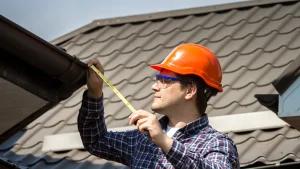
Roof Inspections in Miami 2025: Why They’re Vital and How to Save Thousands
With the ever-present threat of hurricanes and unique climate challenges, roof inspections are no longer optional in Florida—they’re essential.
Miami homeowners live in a paradise, but this tropical haven presents unique and formidable challenges to the very structure protecting their families and investments: the roof. From the relentless sun to the sheer force of hurricanes, a roof in South Florida endures more punishment in a year than roofs in many other regions experience in a decade.
Understanding these threats, knowing how to assess your roof’s health, and choosing the right materials are not merely home maintenance tasks – they are critical components of safeguarding your property and ensuring peace of mind.
This comprehensive guide will equip you with the knowledge to navigate Miami’s demanding climate, make informed decisions about repairs and replacements, and ultimately extend your roof’s lifespan and protect your investment.
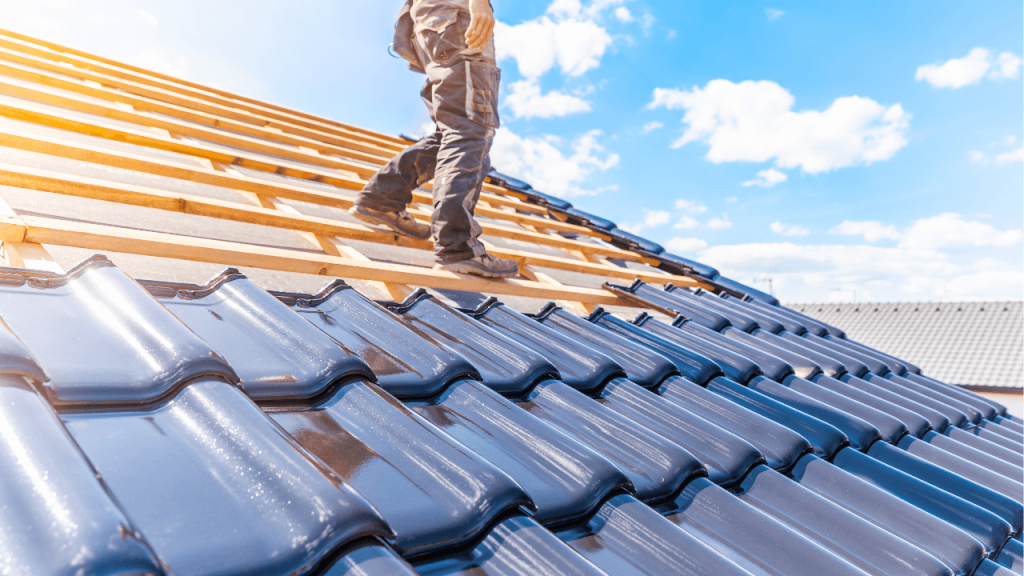
In this article, we’ll see:
Miami’s Climate: A Roof’s Worst Enemy: Why intense sun, high humidity, salt corrosion, and the constant threat of hurricanes (including wind, rain, and even hail) combine to relentlessly degrade roofing materials in South Florida.
DIY Roof Checks: Spot Damage Early: A practical checklist for homeowners to safely inspect their roofs from the ground and, if comfortable, from the roof itself, identifying critical warning signs like missing shingles, granule loss, sagging, or water stains in the attic.
Repair vs. Replace: Smart Decisions & Costs: A clear breakdown of average costs for minor shingle repairs ($300–$1,200), partial replacements ($1,000–$4,000), and full roof replacements ($15,000–$28,000 for Class 4 shingles), plus comparisons for metal ($25,000–$60,000+) and tile roofs ($20,000–$50,000+).
Class 4 Shingles: Miami’s Top Defense: How the highest impact-resistant shingles (UL 2218/FM 4473 rated) use advanced materials like SBS asphalt to withstand significant blunt force and offer enhanced wind resistance, providing superior protection against storms.1
Insurance, Codes & Savings You Must Know: The critical link between adhering to Miami-Dade’s stringent Florida Building Codes (like the 8th Edition 2023 FBC) for deck attachment, underlayment, and material approvals, and how these upgrades can lead to significant homeowners insurance discounts (15-30% for Class 4 roofs).
Why Roofing Nation is Miami’s Trusted Partner: How their 10+ years of local expertise, free storm damage inspections, specialization in Class 4 installations, and comprehensive insurance claim assistance make them the ideal choice for safeguarding your Miami home.
Get a no-obligation quote today
Simply fill out the form below and take the first step toward expert service.
Miami homeowners live in a paradise, but this tropical haven presents unique and formidable challenges to the very structure protecting their families and investments: the roof. From the relentless sun to the sheer force of hurricanes, a roof in South Florida endures more punishment in a year than roofs in many other regions experience in a decade.
Understanding these threats, knowing how to assess your roof’s health, and choosing the right materials are not merely home maintenance tasks – they are critical components of safeguarding your property and ensuring peace of mind.
This comprehensive guide will equip you with the knowledge to navigate Miami’s demanding climate, make informed decisions about repairs and replacements, and ultimately extend your roof’s lifespan and protect your investment.
Miami’s idyllic weather comes with a significant caveat for roofing systems. The combination of intense solar radiation, high humidity, salt corrosion, and the ever-present threat of tropical storms creates a perfect storm of destructive forces. Each element works in concert to degrade roofing materials, leading to premature failure if not adequately addressed.
Hurricanes are, without a doubt, the most devastating threat. The sheer force of sustained hurricane-force winds, coupled with the immense pressure changes they bring, can lift, tear, and completely destroy even well-built roofs.
Beyond the catastrophic damage of a direct hit like Hurricane Ian in 2022, which caused widespread devastation across Florida, including significant wind and rain damage to roofs, even weaker tropical storms can inflict considerable harm. Wind-driven rain can penetrate even the smallest gaps, leading to insidious water damage within the attic and walls. According to NOAA data for South Florida, the region frequently experiences severe thunderstorms, often accompanied by strong winds and large hail.
While large hail is less common than in some other parts of the country, it does occur and can cause significant impact damage to shingles, especially those not designed for such forces. Smaller, more frequent hailstorms, which are more common, can still cause cumulative damage, weakening the roof’s protective layer over time.
Salt corrosion is a silent but pervasive enemy, particularly for homes near the coast. Airborne salt particles settle on roofing materials, especially metal components like flashing, gutters, and fasteners. This salt accelerates the oxidation process, leading to rust and material degradation. Over time, rusted fasteners can fail, compromising the structural integrity of the roof system and making it more vulnerable to wind uplift.
UV radiation from the intense South Florida sun relentlessly breaks down roofing materials. Asphalt shingles, for instance, rely on granules to protect the asphalt from UV rays. Constant exposure causes these granules to loosen and wash away, exposing the underlying asphalt to direct sunlight. This leads to accelerated drying, cracking, and brittleness, significantly shortening the shingle’s effective lifespan.
Torrential rains, a common occurrence during the wet season, exacerbate existing vulnerabilities. While a healthy roof is designed to shed water, repeated deluges can overwhelm drainage systems, leading to pooling and persistent moisture. This constant dampness creates an ideal environment for mold and mildew growth, not just on the surface of the roof but also underneath, impacting the roof deck and supporting structures. Long-term exposure to moisture can lead to rot, structural weakening, and significant interior leaks, often manifesting long after the storm has passed.
The cumulative effect of these climate challenges means that a roof in Miami is under constant assault, requiring a proactive and informed approach to maintenance and material selection.
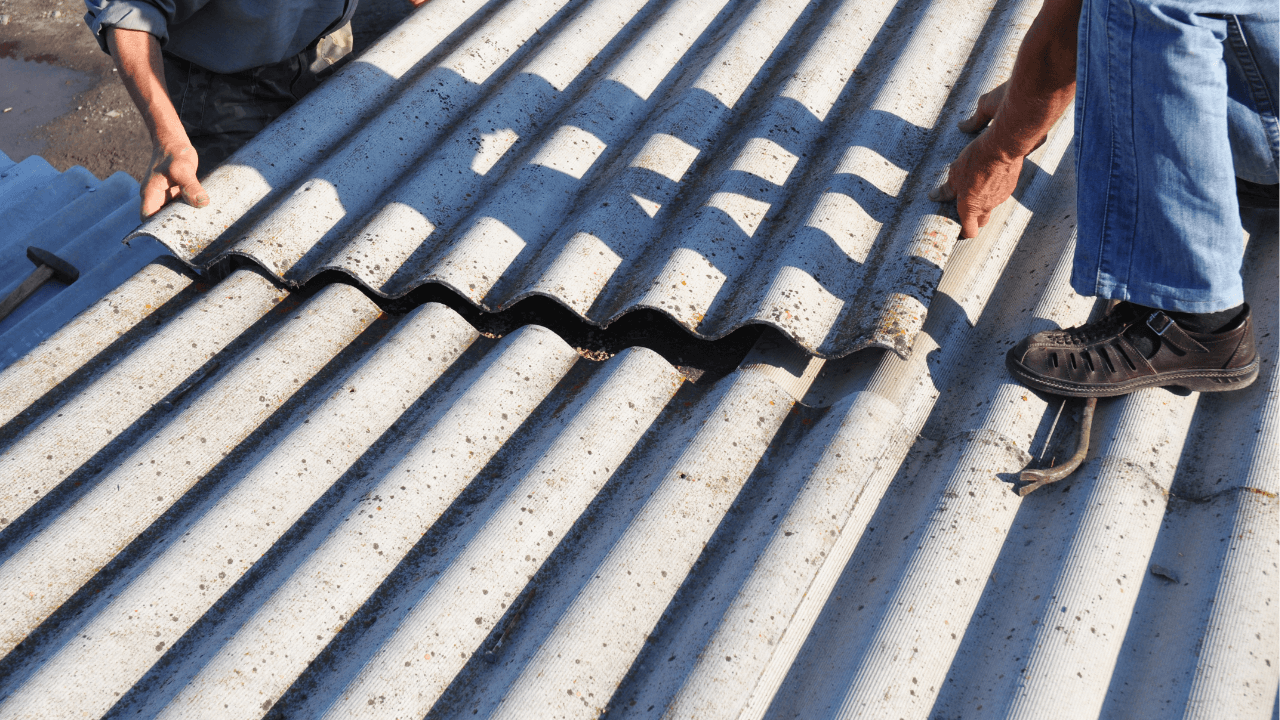
Regular inspections are crucial for Miami homeowners to identify potential issues before they escalate into costly repairs or major structural damage. While a professional assessment by a trusted company like Roofing Nation is always recommended, especially after a significant weather event, a basic DIY roof check can provide valuable insights and help you spot early warning signs.
Safety First: Always prioritize safety. Use a stable ladder, wear appropriate footwear with good grip, and ideally, have someone spot you. If you’re uncomfortable on a ladder or the roof pitch is steep, consider using binoculars from the ground or hiring a professional. Never attempt a roof inspection during or immediately after a storm, or if the roof is wet.
Here’s a DIY inspection checklist:
By conducting these regular checks, especially after any significant storm, you can identify minor issues before they become major headaches. Prompt action based on these observations can save you thousands in future repair costs.
Deciding whether to repair or replace your roof is a significant financial decision for any Miami homeowner. The choice often hinges on the extent of the damage, the age of the roof, and the overall condition of the roofing system. Understanding the typical costs associated with each option can help you make an informed choice.
Repair Costs:
Minor repairs are often the first line of defense against isolated damage.
Partial Replacement Costs:
When damage is more extensive but localized, a partial roof replacement might be a viable option. This involves replacing a section of the roof, rather than the entire system.
Full Replacement Costs:
A full roof replacement is a substantial investment but often becomes necessary when the roof has reached the end of its lifespan, has sustained widespread severe damage (e.g., from a hurricane), or has chronic, unresolvable issues.
Material Alternatives: Cost Comparisons:
While asphalt shingles are popular, Miami homeowners often consider other materials known for their durability and aesthetic appeal, though at a higher upfront cost.
The decision to repair or replace should always begin with a thorough inspection by a reputable roofing contractor. Roofing Nation offers free, no-obligation storm damage inspections, providing a detailed assessment of your roof’s condition and transparent cost estimates for both repair and replacement options.
They can help you weigh the immediate costs against the long-term benefits and risks.
In a region defined by its vulnerability to extreme weather, the choice of roofing material is not merely about aesthetics or initial cost; it’s about resilience and long-term protection. For Miami homeowners, Class 4 impact-resistant shingles are rapidly becoming the gold standard and, arguably, a non-negotiable choice for their superior performance against the relentless forces of nature.
The designation «Class 4» refers to the highest impact resistance rating achievable under independent testing standards: UL 2218 and FM 4473. These rigorous tests are designed to simulate the impact of hail and other windborne debris. To earn a Class 4 rating, a shingle must withstand the impact of a 2-inch steel ball dropped from a height of 20 feet without showing any evidence of cracking or rupturing through the shingle.
This «steel ball test» vividly demonstrates the material’s ability to resist significant blunt force.
The secret behind the exceptional durability of Class 4 shingles lies in their advanced composition. Many Class 4 shingles incorporate polymer mesh reinforcement or are modified with Styrene-Butadiene-Styrene (SBS) asphalt. SBS is a synthetic rubber polymer that significantly enhances the shingle’s flexibility and elasticity.
Unlike traditional asphalt shingles that can become brittle and crack under impact, SBS-modified shingles absorb and dissipate the energy from hail or flying debris, preventing cracks and tears.
Imagine dropping a hard object onto a rigid surface versus a flexible, rubberized one – the latter absorbs the force, while the former shatters. This is the fundamental principle behind SBS modification.
Beyond impact resistance, Class 4 shingles offer enhanced wind resistance, often exceeding standard shingle ratings. Their superior adhesion and construction make them less prone to uplift and blow-off during high winds, a critical factor for Miami properties subject to hurricane-force gusts.
The benefits of investing in Class 4 shingles extend beyond physical protection, directly impacting your wallet through insurance savings. Many Florida-specific insurers, recognizing the reduced risk of claims associated with these durable materials, offer significant premium discounts. Homeowners can often see 15-30% premium discounts on their homeowners insurance policies simply by installing a UL 2218/FM 4473 Class 4 rated roof.
Companies like Citizens Property Insurance Corporation and various private insurers operating in Florida incentivize these upgrades as part of wind mitigation efforts. It’s essential to consult with your insurance provider before installation to confirm eligibility and the specific discount available in your area.
This long-term saving can significantly offset the slightly higher initial cost of Class 4 materials, making them a wise financial decision in addition to a protective one.
For Miami homeowners, a Class 4 shingle roof is more than just a repair; it’s a strategic upgrade that provides unparalleled protection, complies with stringent local building codes, and offers tangible financial benefits through insurance premium reductions.
Navigating the complexities of homeowners insurance and local building codes in Miami is as crucial as selecting the right roofing materials. These elements are intrinsically linked, affecting not only your protection against loss but also the cost of ownership and the legality of your roof.
Understanding Florida Building Codes:
The Florida Building Code (FBC) is one of the most stringent in the nation, particularly concerning wind resistance. Miami-Dade County, in particular, often has even more rigorous requirements due to its history of hurricane impacts. When replacing or significantly repairing a roof, adherence to the latest FBC is not optional – it’s a legal mandate.
This includes specific requirements for:
Failure to comply with these codes can lead to denied insurance claims, fines, and significant expenses to bring the roof up to standard.
Always ensure your chosen contractor is well-versed in and adheres to all current Florida and local Miami building codes. The Florida Building Commission regularly updates these codes, with the 8th Edition (2023) becoming effective December 31, 2023, bringing enhanced requirements for wind and water infiltration resistance.
Insurance Claims and Wind Mitigation Discounts:
Homeowners insurance in Florida can be complex, especially concerning hurricane and wind damage. Standard homeowners insurance (HO-3 policy) typically covers hail damage and wind damage, subject to your deductible. However, Florida policies often include a separate, higher deductible for hurricane-related wind damage (typically 2%, 5%, or even 10% of the dwelling coverage).
This is where «wind mitigation» comes into play. Florida law (Florida Statute 627.0629) requires insurers to offer discounts for specific construction features that reduce the risk of damage from windstorms. A new roof, especially one installed to the latest Florida Building Code standards and using materials like Class 4 shingles, can qualify for significant discounts.
To qualify for these discounts, a certified wind mitigation inspection must be performed after your new roof installation. This inspection verifies the features of your home that mitigate wind damage. The savings can be substantial over the lifespan of your roof, helping to offset the initial investment in a high-performance system.
Understanding these intertwined aspects of insurance, building codes, and potential savings is paramount for Miami homeowners. Working with a reputable contractor who is knowledgeable about these regulations and can assist with the necessary documentation for insurance claims and discounts is invaluable.
When it comes to protecting your Miami home, choosing the right roofing contractor is as critical as selecting the right materials. In a market saturated with options, Roofing Nation stands apart as Miami’s expert, dedicated to providing unparalleled service and durable, hurricane-ready roofing solutions.
With 10+ years serving South Florida, Roofing Nation possesses an intimate understanding of the region’s unique climate challenges and stringent building codes. Our deep local knowledge isn’t just about knowing the technical specifications; it’s about comprehending the specific threats Miami roofs face daily, from the relentless sun to the most powerful hurricanes. We’ve seen firsthand the aftermath of major storms, and we build roofs designed to withstand them.
Roofing Nation offers free storm damage inspections, a crucial service for homeowners in the wake of severe weather. Our experienced inspectors meticulously assess every inch of your roof, identifying both obvious and hidden damage that might compromise its integrity.
We provide transparent, detailed reports, empowering you with the information needed to make informed decisions without any upfront cost.
Our specialization in Class 4 installations underscores our commitment to providing the highest level of protection available. We don’t just install roofs; we engineer defense systems against Miami’s harshest elements. Our teams are factory-certified installers for leading manufacturers of Class 4 impact-resistant shingles, ensuring that your roof is not only built with the best materials but also installed to the exact specifications required for optimal performance and warranty coverage.
This combines with our local code mastery, guaranteeing every project meets or exceeds Miami’s rigorous building standards, ensuring compliance and maximizing your home’s resilience.
Beyond installation, Roofing Nation provides comprehensive insurance claim assistance. Dealing with insurance companies after storm damage can be a daunting process. Our dedicated team works directly with your insurer, helping you navigate the complexities of documentation, adjustor meetings, and ensuring that you receive the full compensation you’re entitled to for your roof repairs or replacement. We advocate on your behalf, leveraging our expertise to streamline the process and reduce your stress.
Our unique value proposition lies in the combination of our factory-certified installers and our local code mastery. This means you get a roof installed by highly trained professionals who understand the specific nuances of Miami’s building environment, delivering a system that is not only robust but also fully compliant and optimized for long-term performance in this challenging climate.
We are more than just contractors; we are your trusted partners in safeguarding your Miami home.
How often should I inspect my roof in Miami?
Miami homeowners should ideally conduct a visual inspection of their roof at least twice a year – once in the spring before hurricane season, and again in the fall after the season concludes. Additionally, a thorough inspection is highly recommended immediately after any significant weather event, such as a severe thunderstorm, tropical storm, or hurricane, even if no obvious damage is apparent from the ground.
Can Class 4 shingles withstand Category 4 hurricanes?
While no roofing material is guaranteed to be impervious to all damage from a direct hit by a Category 4 hurricane, Class 4 impact-resistant shingles offer significantly enhanced protection against extreme winds and windborne debris often associated with such storms. Their UL 2218 and FM 4473 ratings primarily focus on impact resistance from hail and falling objects, but the same underlying technologies (like SBS modification) also improve their flexibility and adhesion, making them much more resistant to wind uplift and blow-off compared to standard shingles.
What’s the ROI on impact-resistant shingles vs. standard?
The Return on Investment (ROI) for impact-resistant shingles is multifaceted. While the upfront cost is typically 10-25% higher than standard shingles, the long-term savings from reduced insurance premiums (often 15-30% discounts from Florida insurers) can significantly offset this. Furthermore, impact-resistant shingles lead to fewer repairs and a longer lifespan in Miami’s harsh climate, reducing future maintenance costs and preserving your home’s value. The peace of mind and enhanced property protection also represent invaluable returns.
Are metal roofs better than Class 4 shingles for salt air?
For properties directly exposed to significant salt air (e.g., beachfront homes), metal roofs, particularly those made from aluminum or specially coated steel (e.g., Kynar 500 finishes), generally offer superior resistance to salt corrosion compared to asphalt shingles. While Class 4 shingles are highly durable, the metal components of any shingle roof (flashing, fasteners) can still be susceptible to salt over time. Metal roofs, with their inherent material properties and durable coatings, provide excellent long-term performance in corrosive coastal environments.
How do I verify a contractor’s license in Florida?
To verify a contractor’s license in Florida, you should use the official online verification system provided by the Florida Department of Business and Professional Regulation (DBPR). Visit their website (myfloridalicense.com) and use their «Verify a License» search tool. Always ensure the license is active, in good standing, and for the specific type of work (e.g., Certified Roofing Contractor) that they are performing.
Does homeowners insurance cover hail damage in Miami?
Yes, standard homeowners insurance policies (HO-3) in Florida typically cover damage caused by hail, including damage to your roof, siding, and windows. However, claims are subject to your policy’s deductible. It’s important to review your policy for any specific exclusions or separate deductibles for windstorm or hail damage that may apply in high-risk areas like Miami.
What’s the lifespan of Class 4 shingles in coastal zones?
In typical conditions, Class 4 shingles are designed to last 25-30 years or even longer. However, in aggressive coastal zones like Miami with intense UV exposure, high humidity, and salt corrosion, their lifespan might be slightly reduced compared to inland areas. With biannual maintenance as recommended by FL RC-4 code (which emphasizes regular inspections and addressing minor issues promptly), a well-installed Class 4 shingle roof can still provide exceptional durability and often meet or exceed a 20-25 year lifespan.
Why is Roofing Nation rated #1 for storm repairs in Miami?
Roofing Nation is highly rated for storm repairs in Miami due to its decade-plus experience serving South Florida, its specialization in hurricane-resistant Class 4 installations, and its comprehensive insurance claim assistance. We combine factory-certified installers with deep local code mastery, ensuring repairs are not just quick fixes but durable, code-compliant solutions that stand up to future storms, earning us the trust and top ratings from Miami homeowners.

With the ever-present threat of hurricanes and unique climate challenges, roof inspections are no longer optional in Florida—they’re essential.
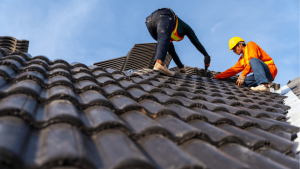
In a state like Florida, particularly Miami, where storms are a constant threat, regular roof maintenance isn’t a luxury; it’s a vital necessity to protect your home and your wallet in 2025.

This guide will provide you with the tools needed to ensure your hurricane roof damage claim gets approved in 2025.

Discover how to leverage tax credits for your new roof in Miami. Do you qualify for 30% savings? We explain step-by-step. Get your free estimate!
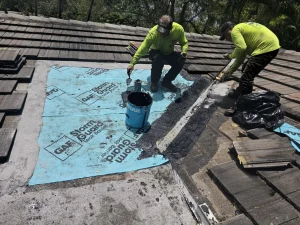
In this 2025 guide, we’ll analyze the three main types of underlayment (asphaltic, synthetic, and self-adhering), their advantages in tropical climates, and the red flags every homeowner should know before hiring a roofing service.
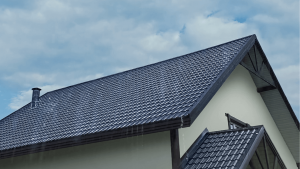
Based on hundreds of projects, we answer the 5 most frequent inquiries we receive, with details on installation times, rain policies, flexible payment options, and warranty coverages according to the 2025 code.
® All rights reserved,
Roofing Nation LLC.
10830 NW 138th St #1, Hialeah
Gardens, FL 33018
(Monday – Sunday)
© Copyright Roofing Nation. All Rights Reserved 2025